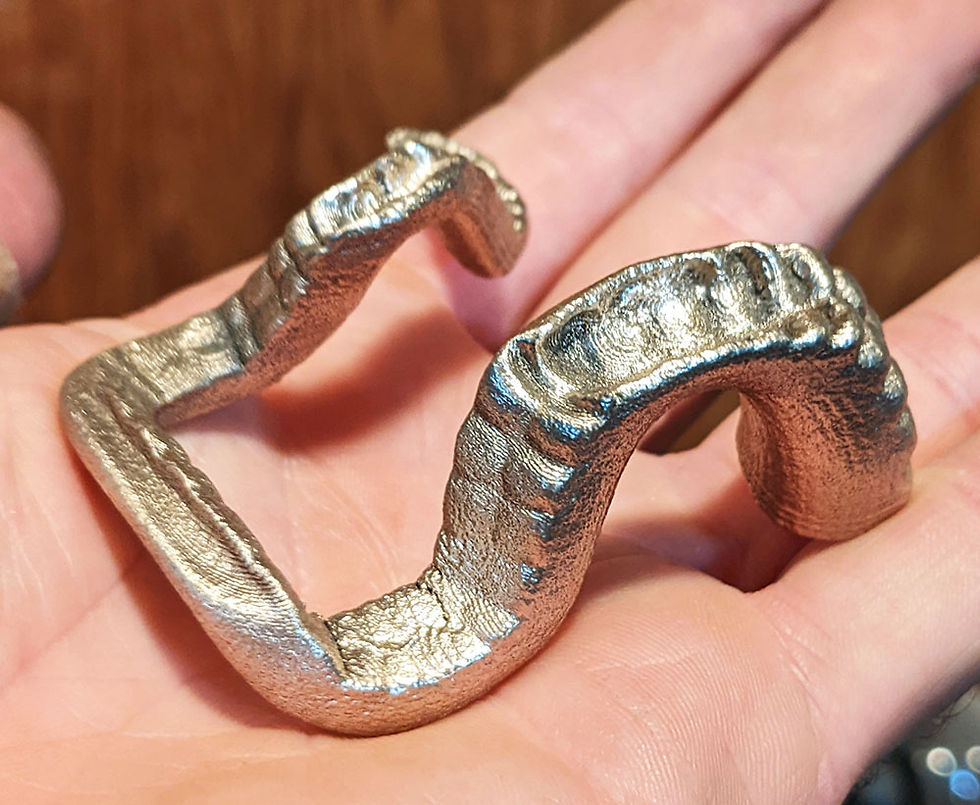How to use ColorFabb Lightweight (LW) PLA
- gCreate Team
- May 28, 2020
- 3 min read
Updated: Jan 11, 2021

LW-PLA from Colorfabb

LW-PLA (Lightweight PLA) is a material that has unique properties that allow it to foam as it prints based on temperature. The main purpose is to decrease the weight of a print, while still maintaining the same form factor. This is a great material to use for components that are weight dependant. With the right settings, your prints can come out to be 65% lighter in weight than normal PLA! This revolutionary filament has a multitude of real-world applications such as aviation and aerodynamics technology. All of the 3D prints in this post were completed on gMax 3D Printers.
Link to filament:
Difficulty level:
Medium to Hard
Pros: + Can control the weight of a print
+ Good bed adhesion
+ Looks smooth and clean
+ Uses less material
Cons:
- Tends to string
- Lower weight prints are softer and weaker
How to print with LW-PLA

This filament starts foaming at high temperatures. The higher the temperature, the higher the expansion rate. This property is the reason that you can adjust the weight of the print.
The settings that control the weight are:
Flow rate, Printing temperature, and Print speed.
Since increasing the temperature increases the rate of expansion, we will need to reduce the flow of the filament in order to accommodate for the expansion. The flow will determine the weight of the printed part. If you decrease the flow to 60%, then the print will weigh 60% of its normal weight in PLA. The hotter you print, the less flow you need. LW-PLA will foam up and can be up to 65% lighter than normal PLA parts, so the lowest flow rate you should technically go is 35%.
Here are a few basic settings you can change to achieve prints with lower weight:
80% Weight: Flow rate: 80% ~ Temperature: 215º ~ Print speed: 50 mm/s
70% Weight: Flow rate: 70% ~ Temperature: 225º ~ Print speed: 50 mm/s
60% Weight: Flow rate: 60% ~ Temperature: 235º ~ Print speed: 45 mm/s
50% Weight: Flow rate: 50% ~ Temperature: 245º ~ Print speed: 45 mm/s
40% Weight: Flow rate: 40% ~ Temperature: 260º ~ Print speed: 45 mm/s
35% Weight: Flow rate: 35% ~ Temperature: 270º ~ Print speed: 45 mm/s

Print Settings
Hotend Temp: Variable
Flow Rate: Variable
Heated bed: Not recommended
Layer Height Range: 0.2mm - 0.32mm
Cooling: Ramp up from 0% to 60%
Retraction: 0.75mm-1.25mm
First Layer Height: 125%
First Layer Width: 125%
First Layer Speed: 75%
Nozzle: 0.4mm to 0.8mm
Tips and tricks for printing with LW-PLA
This fun and foamy filament can be difficult to work with at first. It takes a few tries to really dial in the settings. One of the things to take into account is the expansion and pressure build-up. Since this filament is constantly expanding while under high temperature, when the print head is moving the filament tends to leak out. The filament expands within the hotend and essentially "extrudes" filament when it isn't supposed to.
A good way to counteract that is by increasing the retraction distance and turning on coasting. In addition to this, make sure that you turn on the setting that avoids crossing outlines for travel movement. These options help lower the amount of "stringing" when using LW-PLA.
If you need to clean out the stringing with an Exacto blade, it will end up leaving white scuff marks on the print. However, if you use a lighter or heat gun on the scuff marks, the should fade away. Just don't let the flame touch the part or it will burn.
When printing at higher temperatures, the filament foams causing the final product to be weaker than normal PLA. At 50% weight settings, the print feels softer than hard plastic and much less brittle.


In our experience, the unique properties of LW PLA put it in an interesting category of plastic. Not only is the weight reduction a factor, but being porous it can absorb liquid epoxy or other fillers to create a very strong part. It can also serve as a lightweight form that can be covered with fiberglass and resin, similar to a boat hull, which really opens up many more options.

Once you dial in the settings for LW-PLA, the possibilities for the applications are endless!







Comments